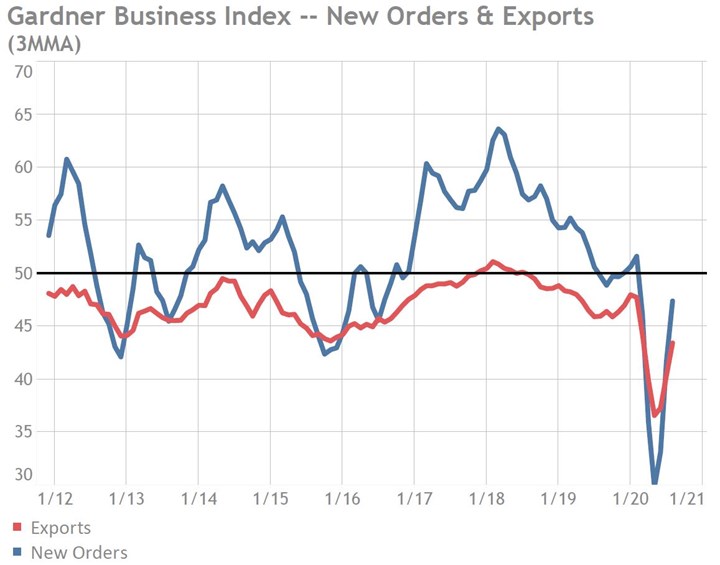3-Month Decline in U.S. Dollar Index May Assist in Further Improving Manufactured Exports Activity
The value of the U.S. dollar has fallen since April, this decline makes U.S. exports cheaper when converted to prices in foreign currencies and thus more price competitive. This should be helpful in turning around the steep contraction in export order activity for manufactured goods since the start of COVID.
Monthly U.S. exports and imports have both fallen dramatically since February 2020. As of the latest data release provided by Bureau of Economic Analysis (BEA) -which ends with May results- exports of U.S. goods had fallen over 25% while U.S. imports were down a less dramatic 17%. During the February to May period the value of the U.S. Dollar (USD) against other currencies increased to multi-year highs not seen since at least before the Great Recession.

Trade Weighted US Dollar Index: Broad, Goods and Services
The USD often appreciates greatly during periods of global economic uncertainty or duress because of the dollar’s ability to retain its value relatively better than that of other currencies. In other words, foreign entities would rather hold (“demand”) USDs over their own domestic currency or assets because history has shown that the value of the USD fluctuates less compared to other currencies during a crisis and is highly “liquid”, meaning that others are generally willing to accept it in exchange for goods and services. As the demand for USDs increases, this pushes up the “price” of the U.S. dollar relative to other currencies. When this happens, it takes more foreign currency to purchase the same number of US dollars as it did previously, and an ensuring rise in the value of the dollar occurs as illustrated above. One consequence of USD appreciation is that it makes U.S. Exports -priced in U.S. dollars- more ‘expensive’ when foreign currency must be converted to USDs to transact an international sale.
In the more recent period between early-May and late-August, the value of the dollar fell by nearly 7%, returning it to pre-pandemic (2019) levels. This fall in the value of the USD improves the price competitiveness of US exports. These currency events are also indirectly apparent in Gardner Intelligence’s manufacturing focused export activity readings. The timing of export orders activity has mirrored that of total new orders in 2020; however, the magnitude of the change in exports activity has been relatively weaker since April. One could suspect that this is due at least in part to recent currency fluctuations.





.jpg;width=70;height=70;mode=crop)
